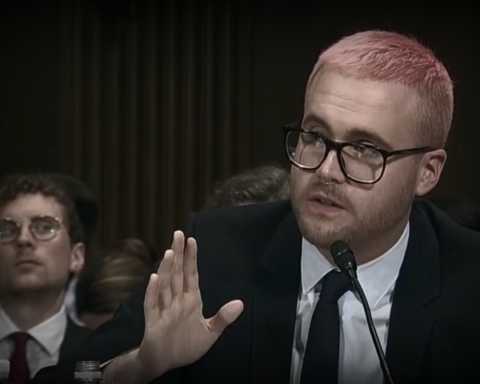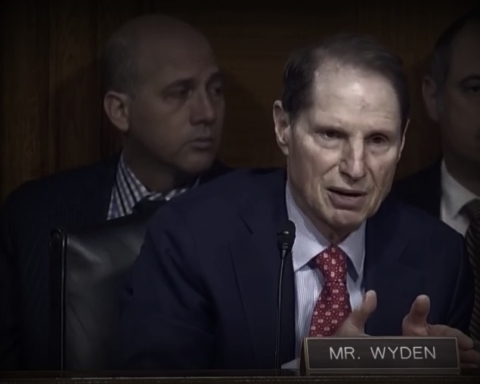He told CIA interrogators to throw prisoners against the wall, to waterboard them, to make them defecate themselves, and to put them in boxes with insects. And despite disastrous results, the newly released torture report reveals he was rewarded handsomely for his services.
His name is James E. Mitchell, and his partner in all of this was Bruce Jessen. They were the architects of the CIA’s post-9/11 interrogation program—the disturbing details of which are just now being revealed to the public after Tuesday’s release of a long-delayed Senate intelligence committee report.
Despite their known identities, the two men are referred to in the report under pseudonyms “SWIGERT” and “DUNBAR.”
Mitchell and Jessen, both psychologists with military backgrounds, were contracted months after 9/11 by the CIA to “develop, operate, and assess its interrogation operations.” In 2005, the two men set up a company, Mitchell Jessen and Associates, which secured a contract from the intelligence agency worth $180 million to continue its services.
Despite neither psychologist having “any experience as an interrogator,” nor a “specialized knowledge of al-Qa’ida,” nor a “background in counterterrorism,” nor any “relevant cultural or linguistic expertise,” the committee discovered that Mitchell and Jessen “personally conducted interrogations of some of the CIA’s most significant detainees.”
Their first case was Abu Zubaydah, a “high-value” detainee captured in 2002.
The report details that in April of that year, an interrogation team provided CIA Headquarters with three interrogation strategies. CIA Headquarters chose the most coercive interrogation option, which was proposed and supported by CIA contractor SWIGERT.”
Mitchell was working with the CIA’s Office of Technical Services, where he had published a report along with Jessen claiming that subjecting detainees to “learned helplessness” techniques might lead to more cooperation.
After his plan was chosen, Mitchell was asked to join an interrogation team and to “consult on the psychological aspects of the interrogation” of Zubaydah. Months later, in July 2002, his role would expand.
“CIA officers held several meetings at CIA Headquarters to discuss the possible use of ‘novel interrogation methods’ on Abu Zubaydah.”
According to the report, the “methods” suggested by Mitchell included: “the attention grasp, walling, facial hold, facial slap, cramped confinement, wall standing, stress positions, sleep deprivation, waterboard, use of diapers, use of insects, and mock burial.”
As the Department of Justice’s Office of Legal Counsel crafted the legal justification to use Mitchell’s recommended torture techniques, preparations began at “DETENTION SITE GREEN,” which held Zubaydah.
The CIA officer at the site described in a cable that should Zubaydah die during interrogations, then “we need to be prepared to act accordingly,” meaning he “would be cremated.”
The officials added, “in light of the planned psychological pressure techniques to be implemented, we need to get reasonable assurances that [Abu Zubaydah] will remain in isolation and incommunicado for the remainder of his life” – an interesting admission in light of Republicans’ desire to indefinitely maintain the detention camp at Guantanamo Bay.
Other CIA officers responded to the cable, “There is a fairly unanimous sentiment within HQS that [Abu Zubaydah] will never be placed in a situation where he has any significant contact with others and/or has the opportunity to be released.”
On August 3rd, Mitchell and Jessen were given formal approval to use their methods.
At this point, President Bush had not been notified of the program. The report also found that “the CIA did not brief Secretary of State Colin Powell or Secretary of Defense Donald Rumsfeld, two members of the National Security Council, on the techniques.” Relevant congressional committees were also not briefed.
Once the DOJ’s Office of Legal Counsel gave it’s blessing, and word was transmitted to Zubaydah’s detention site, the CIA instructed “that only the two CIA contractors, SWIGERT and DUNBAR, were to have contact with Abu Zubaydah. Other CIA personnel at DETENTION SITE GREEN – including CIA medical personnel and other CIA ‘interrogators with whom he is familiar’ – were only to observe.”
Below is a description of what immediately followed:
[aesop_image imgwidth=”100%” img=”https://districtsentinel.com/wp-content/uploads/2014/12/Screen-Shot-2014-12-09-at-2.44.23-PM.png” align=”center” lightbox=”on” captionposition=”left”]
[aesop_image imgwidth=”100%” img=”https://districtsentinel.com/wp-content/uploads/2014/12/Screen-Shot-2014-12-09-at-2.44.37-PM.png” align=”center” lightbox=”on” captionposition=”left”]
[aesop_image imgwidth=”100%” img=”https://districtsentinel.com/wp-content/uploads/2014/12/Screen-Shot-2014-12-09-at-2.46.08-PM.png” align=”center” lightbox=”on” captionposition=”left”]
As the torture of Zubaydah was underway, CIA personnel began lodging their complaints. Records show that officers witnessing Mitchell’s techniques were “visually and psychologically very uncomfortable.”
Just four days in, one officers’ email read: “Today’s first session…had a profound effect on all staff members present…it seems the collective opinion that we should not go much further…everyone seems strong for now but if the group has to continue…we cannot guarantee how much longer.”
Other officers threatened to leave the site and questioned the legality “of escalating or even maintaining the pressure.”
After this marathon torture session of Zubaydah, “CIA personnel at the detention site concluded that Abu Zubaydah had been truthful and that he did not possess any new terrorist threat information.”
The committee’s report adds, “CIA records indicate that Abu Zubaydah never provided the information for which the CIA’s enhanced interrogation techniques were justified and approved.”
However, Mitchell and Jessen viewed the interrogation of Abu Zubaydah as a success. A cable they authored claimed, “the aggressive phase at [DETENTION SITE GREEN] should be used as a template for future interrogation of high value captives.”
Less than a year later, Mitchell and Jessen were at “DETENTION SITE BLUE” waterboarding Khalid Sheik Mohammed. CIA officers raised concerns about “conflicts of interests” as the two psychologists often both interrogated prisoners and evaluated their mental well-being to determine if more aggressive interrogation is permissible.
“Although these guys believe that their way is the only way, there should be an effort to define roles and responsibilities before their arrogance and narcissism evolve into unproductive conflict in the field,” wrote one CIA officer at the time.
That recommendation went unheeded. Mitchell and Jessen’s methods of torture were put into use at other detention sites around the world, described using an assortment of colors.
In 2005, they started a company to continue their services with the CIA. That company, Mitchell Jessen and Associates, was tasked with “conducting ongoing conversations with CIA detainees to learn about the terrorist mind set, developing strategies, and writing the history of the CIA’s Detention and Interrogation Program.”
In fact, Mitchell and Jessen’s company had practically taken over the program from the CIA by 2006, employing former agency interrogators. In 2008, 85% of the workforce in the CIA’s detention and interrogation operations were private contractors.
The company would later play a role in “the interrogations of detainees held in foreign government custody” and “served as intermediaries between entities of those governments and the CIA.”
Between 2005 and 2010 – when the contract was officially closed out, after the CIA ended the program – the agency paid Mitchel and Jessen’s company $75 million for “services in conjunction” with the “Detention and Interrogation Program.” The CIA also agreed to a $5 million “indemnification contract for the company that covered, among other expenses, criminal prosecution.”
In 2009, after CIA Director Leon Panetta formally ended the program, Mitchell and Jessen’s company closed its doors.
Earlier this year, Mitchel spoke to the Guardian defending his role in CIA interrogation and torture.
“I’m just a guy who got asked to do something for his country by people at the highest level of government, and I did the best that I could,” he said.
The Senate Intelligence Committee’s exhaustive, five-year long report examined the legacy of this program. In releasing it, Chairwoman Dianne Feinstein (D-Calif.) described Mitchell and Jessen’s methods as “brutal and far worse than the CIA represented to policymakers.”
She also said they were ineffective.
“While being subjected to the CIA’s enhanced interrogation techniques and afterwards, multiple CIA detainees fabricated information, resulting in faulty intelligence. Detainees provided fabricated information on critical intelligence issues, including the terrorist threats which the CIA identified as its highest priorities,” the committee reported.
As far as how much damage “SWIGERT” and “DUNBAR” did to the United States, the committee didn’t pull any punches.
“The CIA’s Detention and Interrogation Program damaged the United States’ standing in the world, and resulted in other significant monetary and non-monetary costs,” it says.
The report describes “immeasurable damage to the United States’ public standing, as well as to the United States’ longstanding global leadership on human rights in general and the prevention of torture in particular.” Veracity of those claims notwithstanding, the report estimates that the true cost of the program is over $300 million.
Speaking on the floor of the US Senate on Tuesday, Senator Angus King (I-Maine) was careful not to impugn the entirety of the CIA following the release of this report.
“The CIA doesn’t do anything. People do things,” he said.
In this case, the primary “people” doing these things just so happened to not be CIA at all. As Sen. King noted, “Contractors were actually designing this program.” And they were making money most Americans can only dream of.






